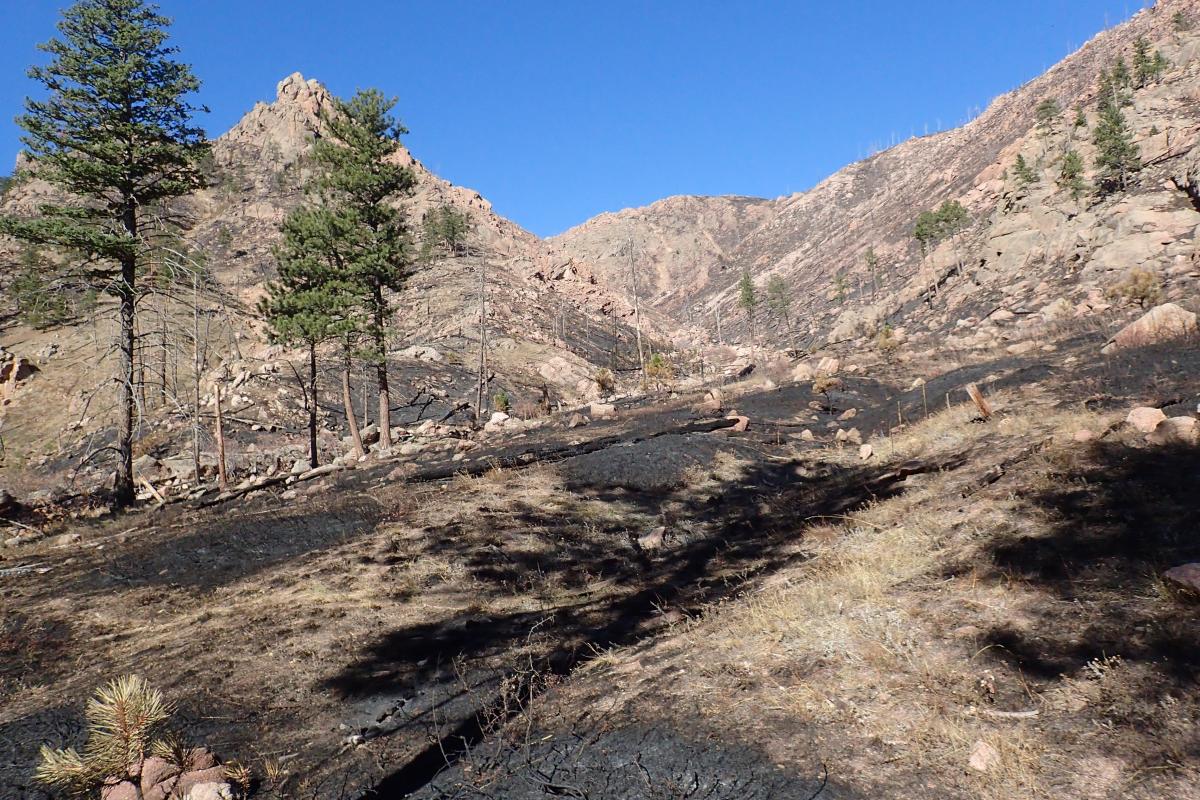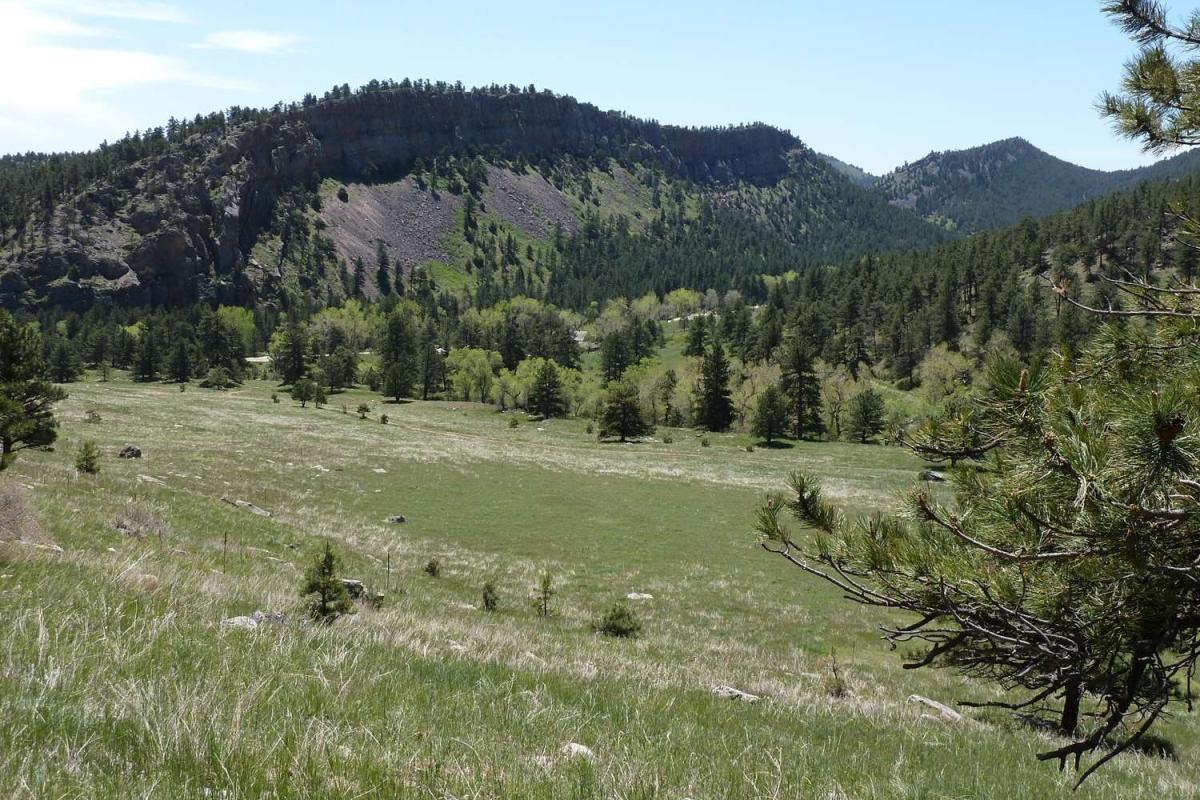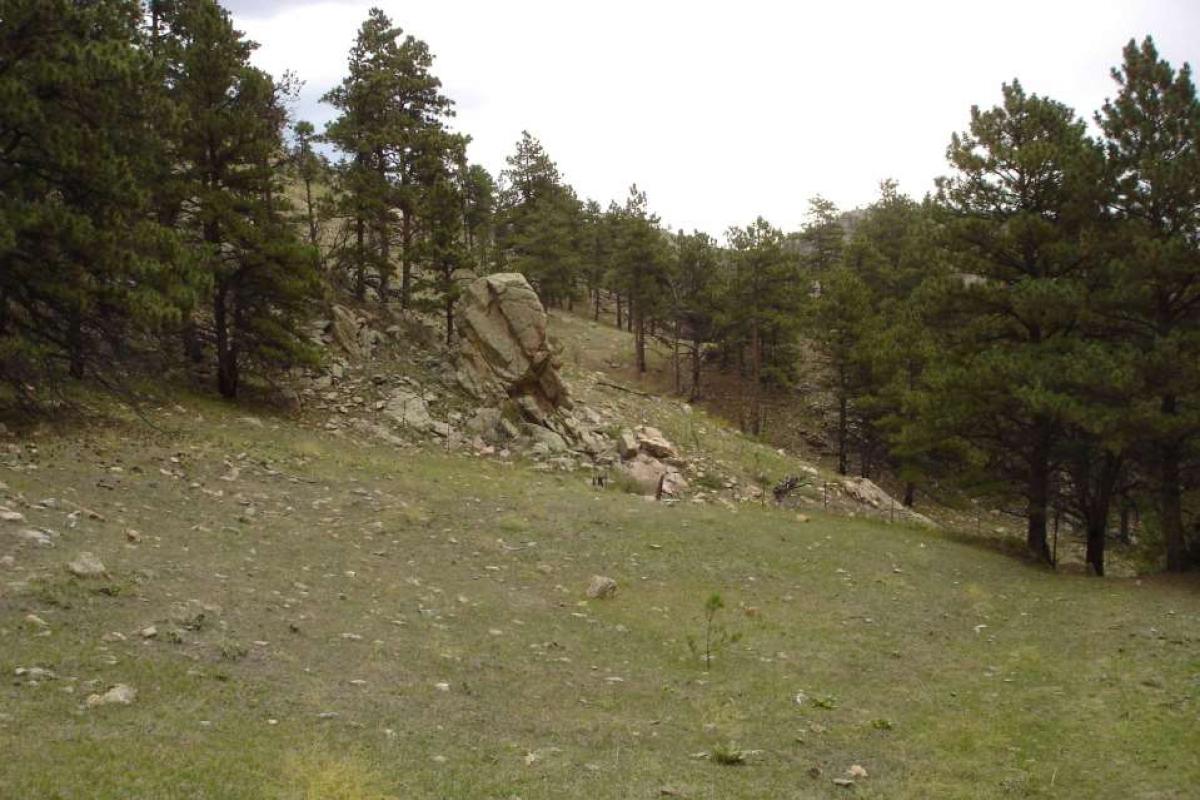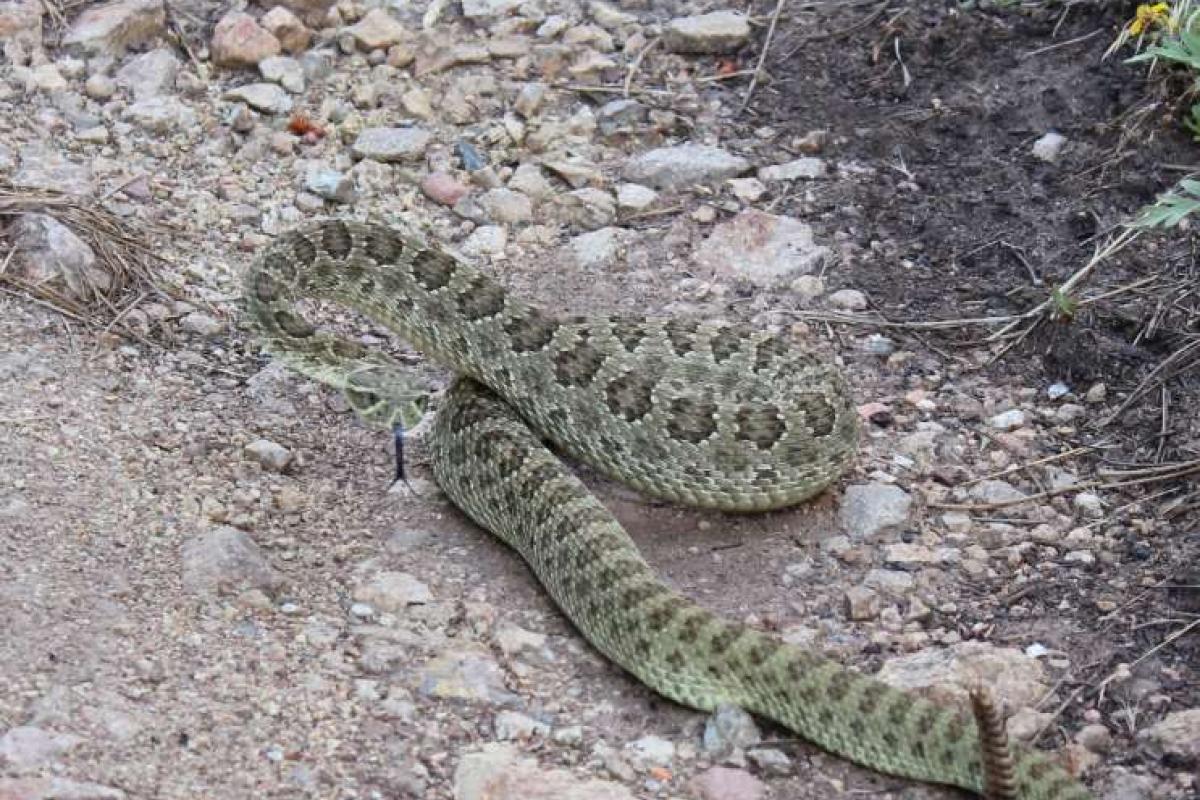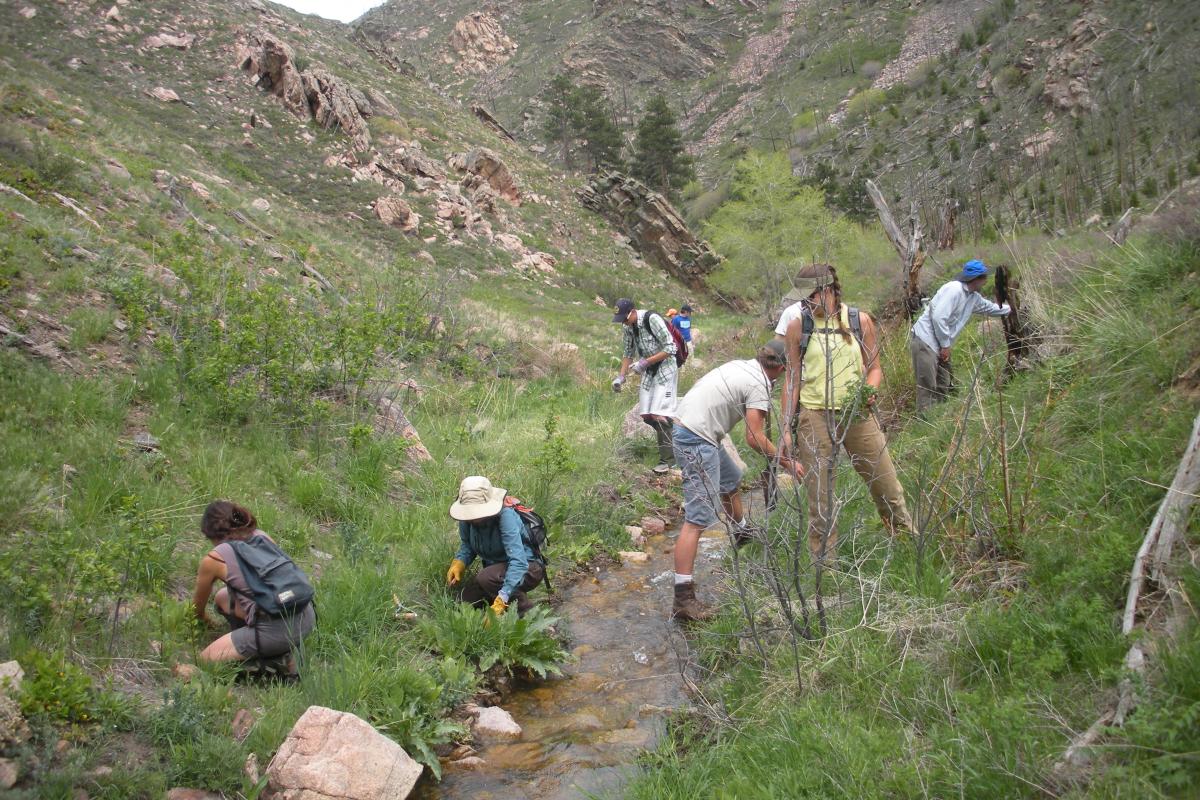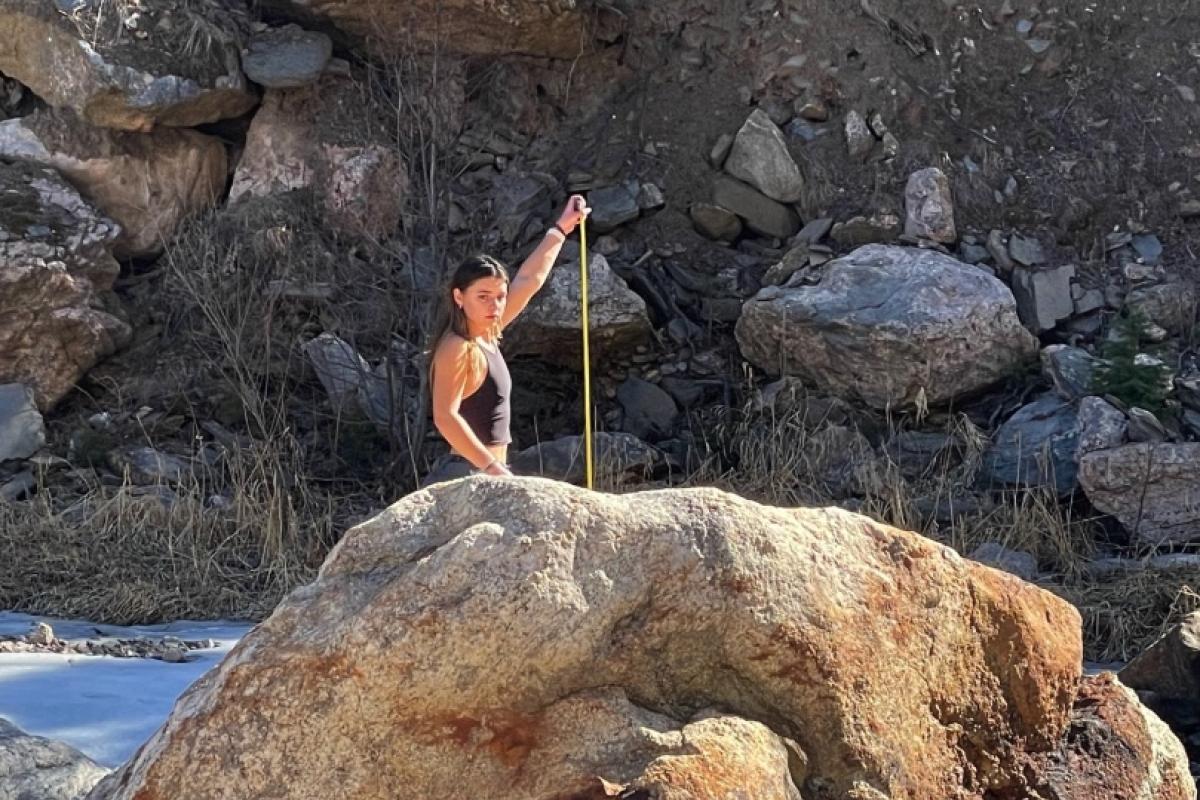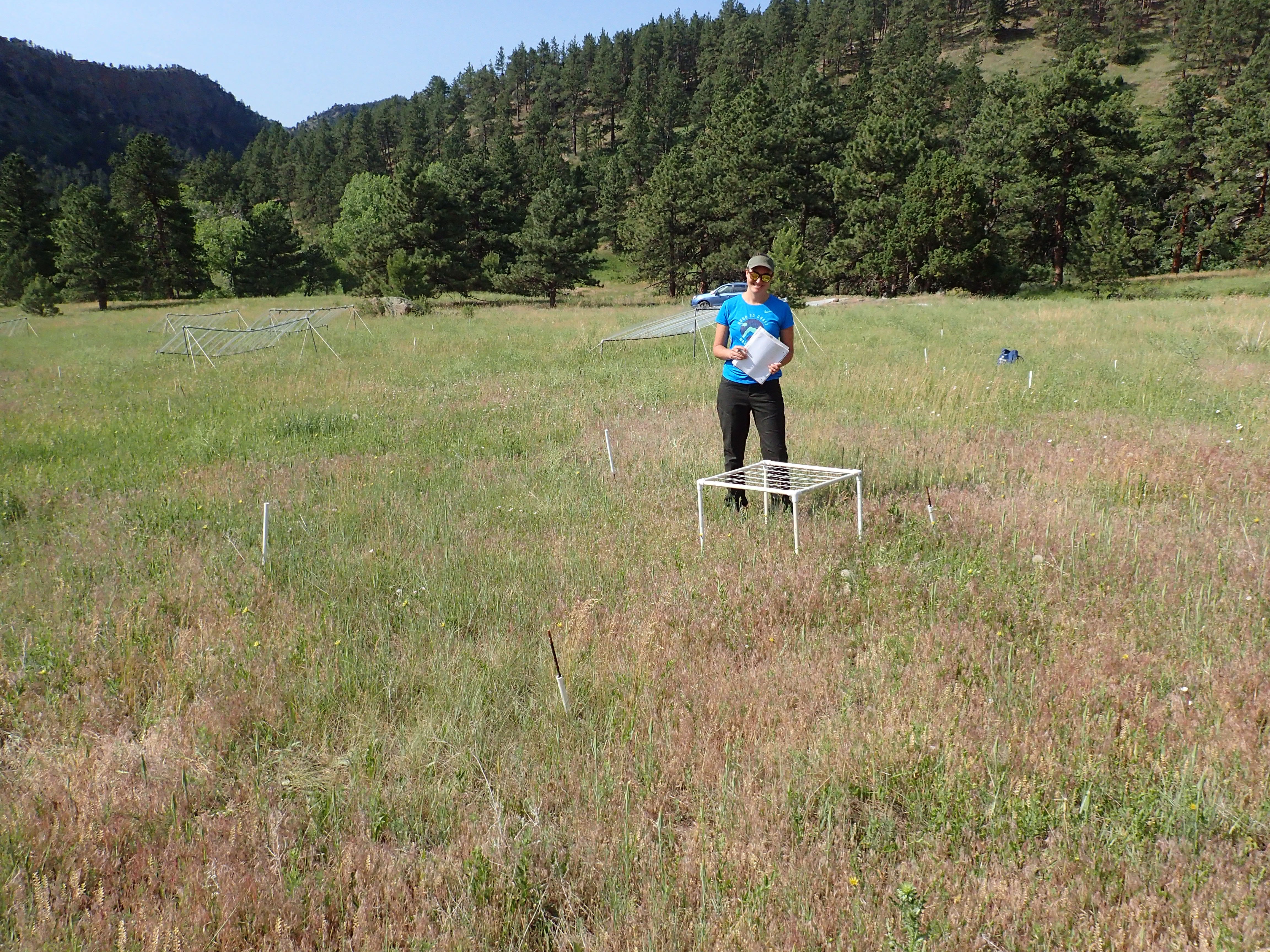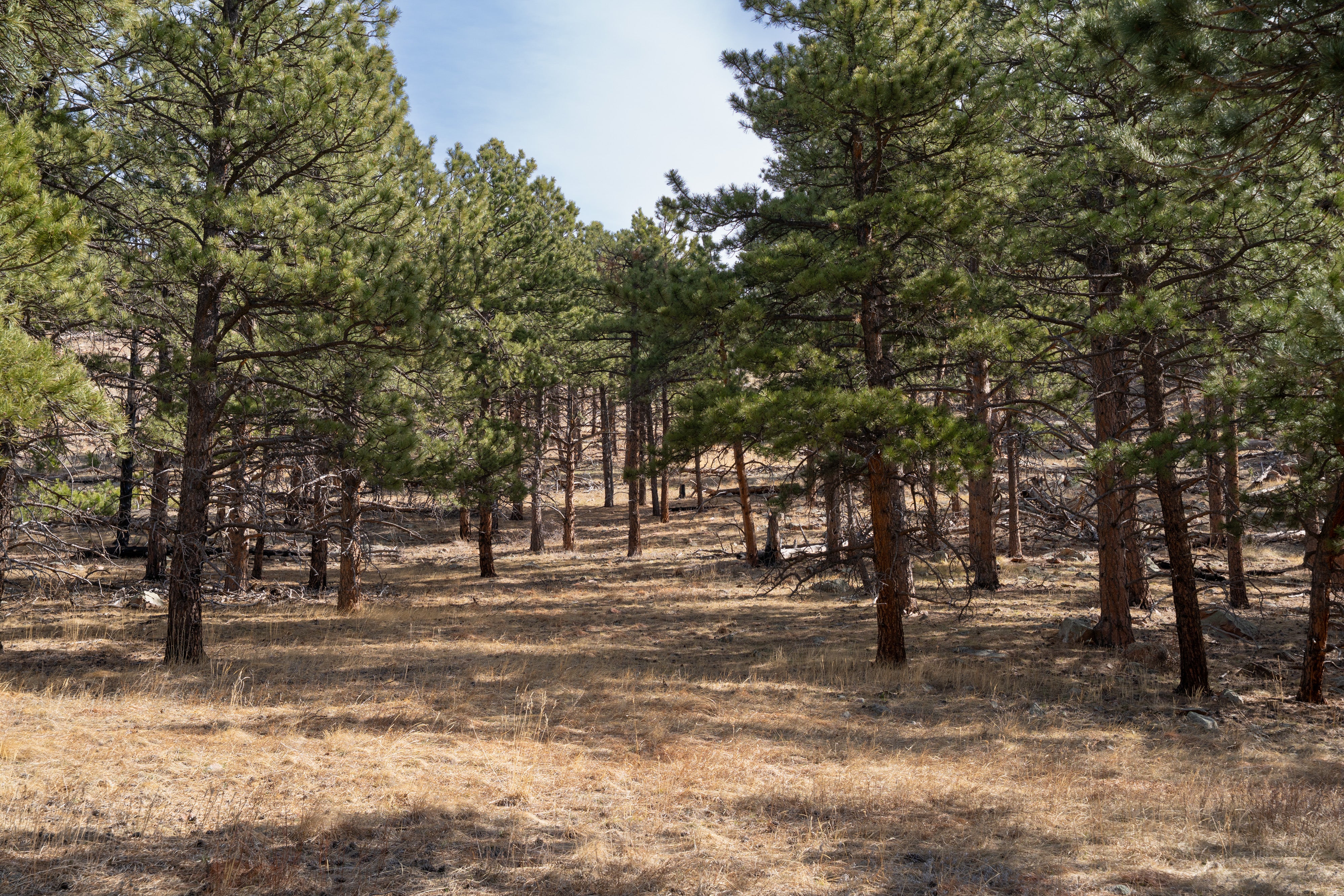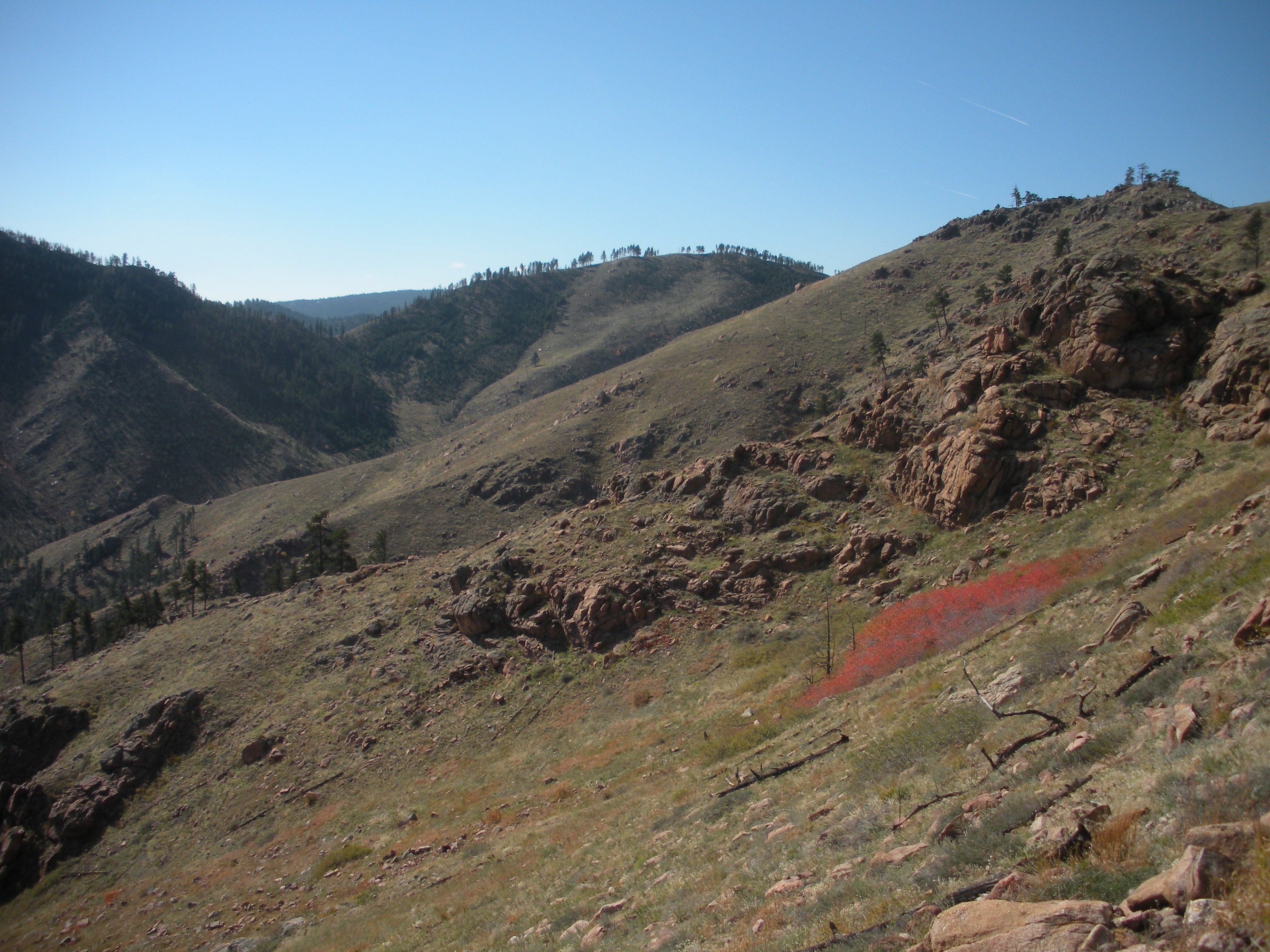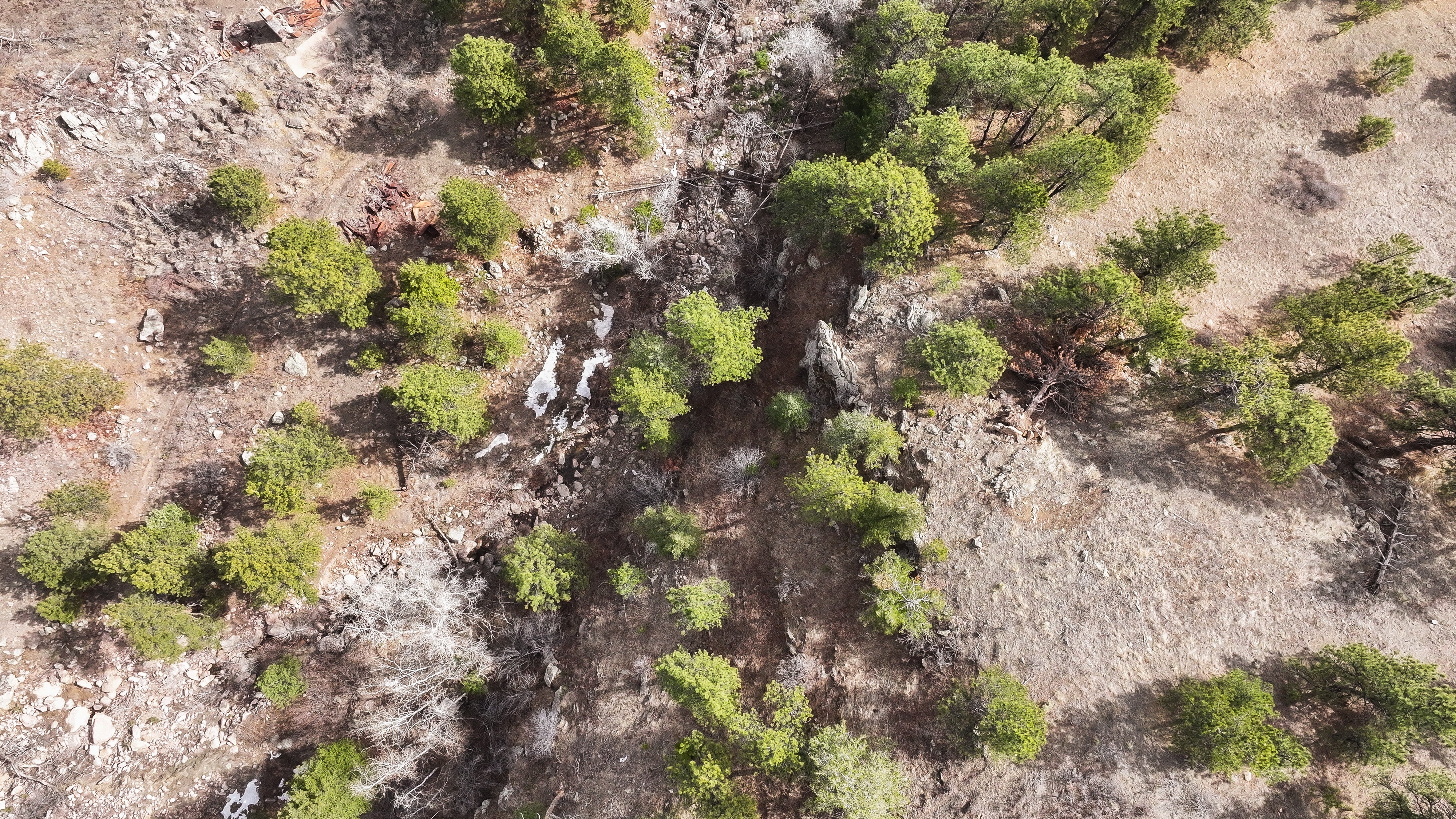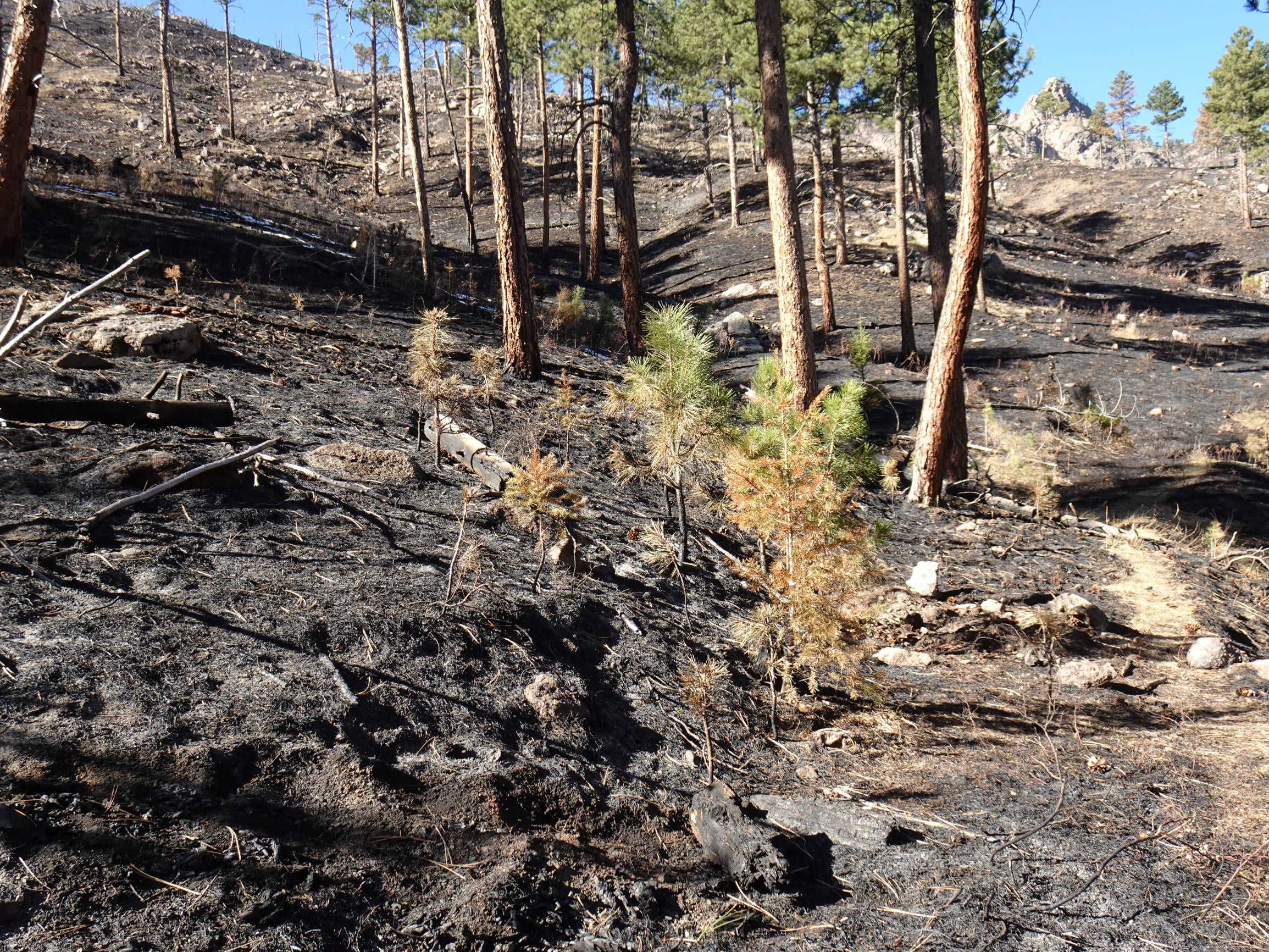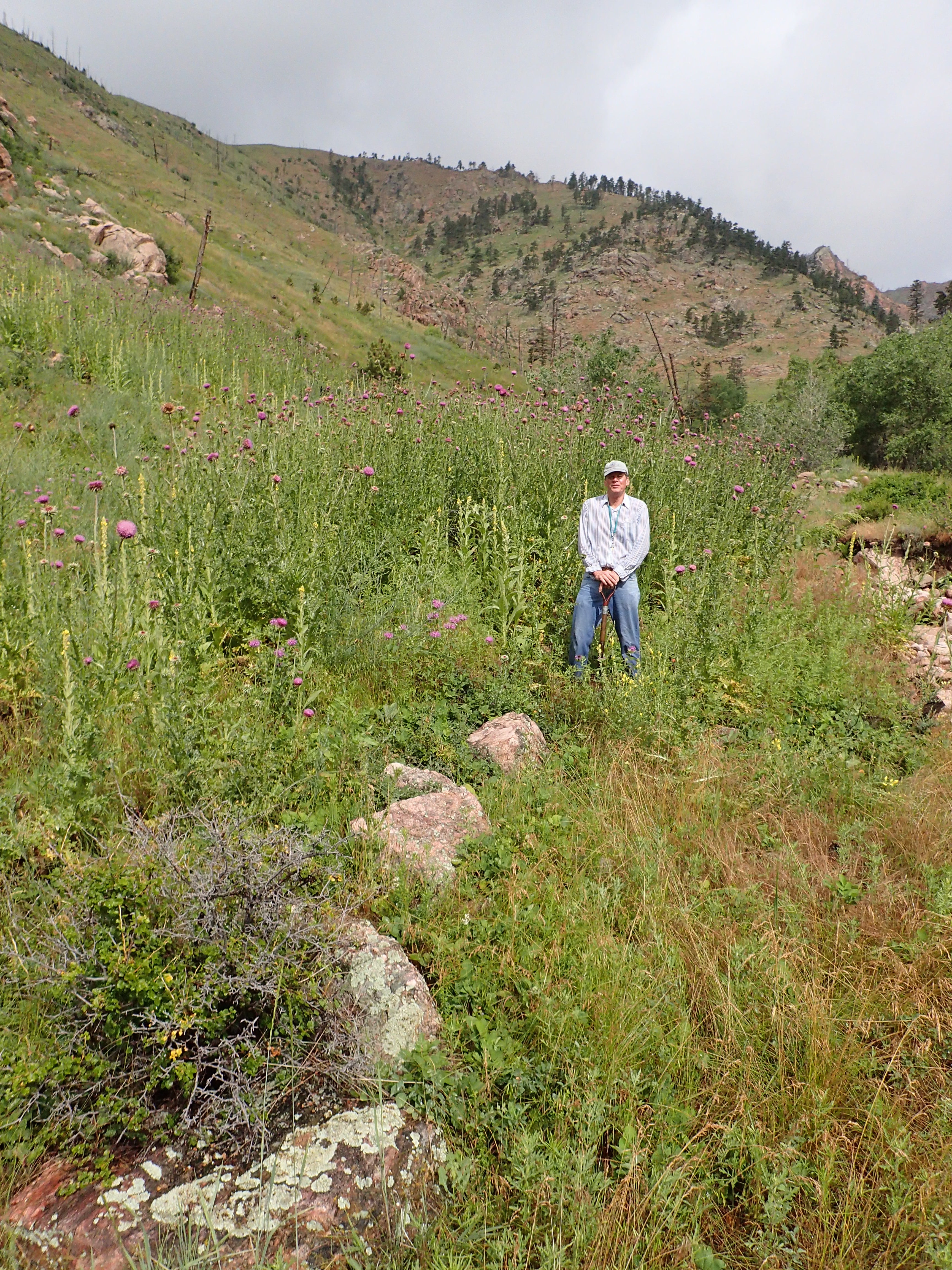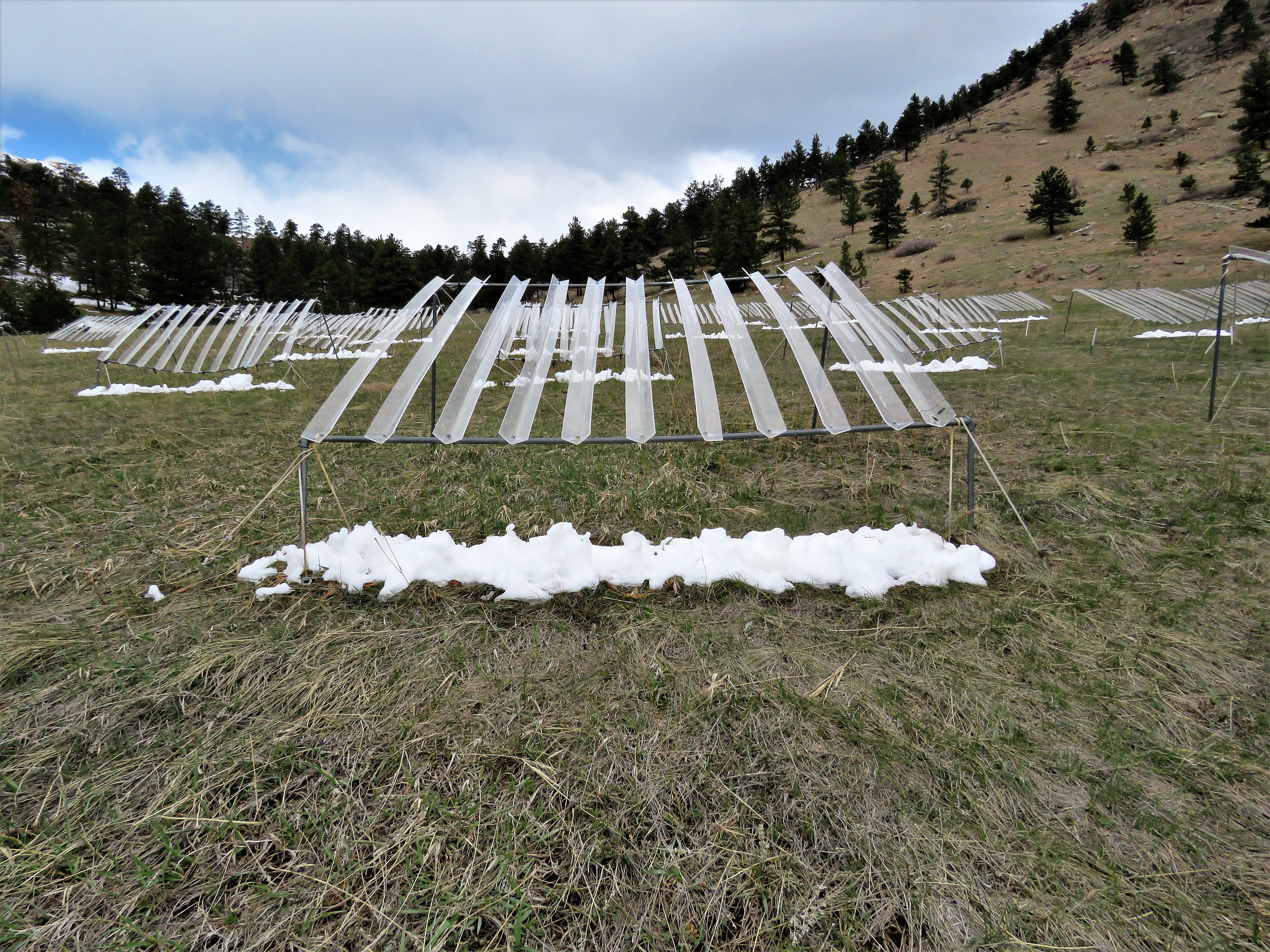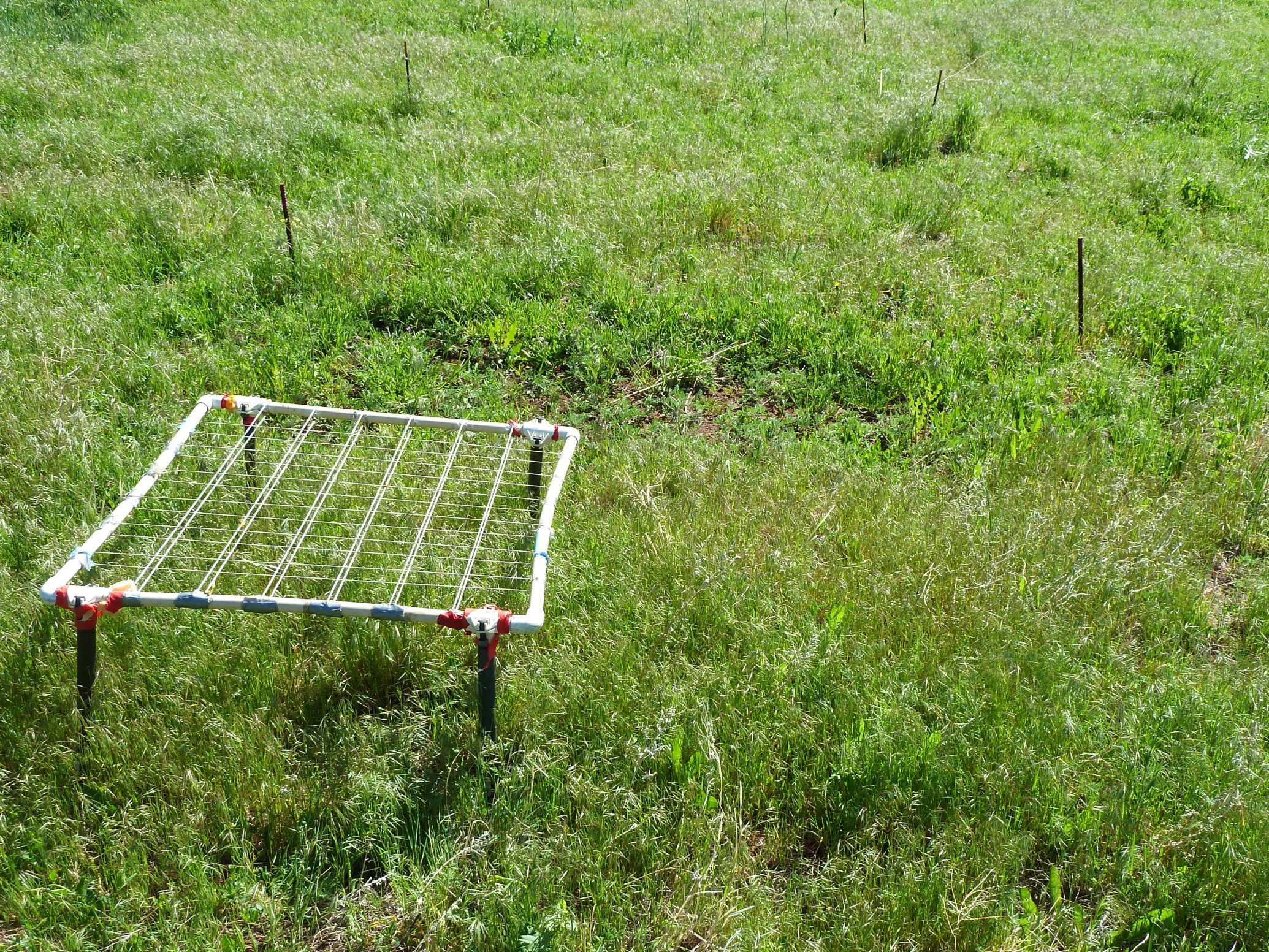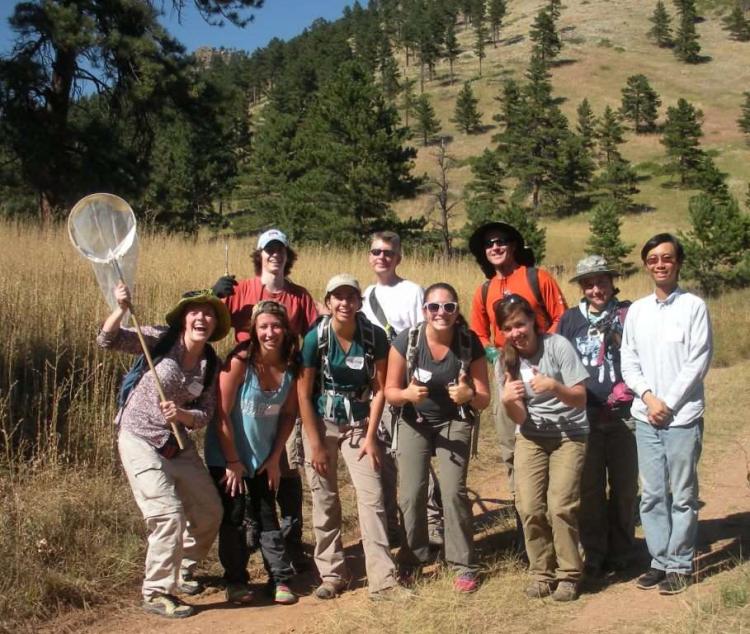Spruce Gulch Wildlife and Research Reserve
The Spruce Gulch Wildlife and Research Reserve is a 476-acre natural area in the foothills of the Rocky Mountains just outside Boulder, managed by the Institute of Arctic and Alpine Research (INSTAAR). The reserve is home to a pristine foothills watershed, making it a unique site for ecological and hydrological research. Its natural beauty and close location to CU Boulder campus also make it an excellent site for experiential learning in the humanities, social sciences, architecture and the arts. Our mission is to provide research and educational opportunities for scientists, students, K-12 educators and nonprofit groups.
Although Spruce Gulch is not open to the public, it is available for research, education and conservation initiatives from both CU-affiliates and other local organizations. If you would like to inquire further, you can reach out to reserve director Tim Seastedt at timothy.seastedt@colorado.edu.
Help us advance research and education at Spruce Gulch Reserve by making a gift:

We are setting up the reserve to be a transformative program. It will benefit research, teaching, and outreach as well as advance environmental sustainability initiatives for our community.
Director of the Spruce Gulch Wildlife and Research Reserve
Professor Emeritus, EBIO and INSTAAR, CU Boulder
Wildlife & conservation
This reserve, in conjunction with adjacent U.S. Forest Service land and Heil Ranch Open Space property, creates a major wildlife corridor. We yield the trails to a number of occupants, including:
Mountain lion (spotted on a trail cam)
Black bear (spotted on a trail cam)
Rattlesnake (photo by Timothy Seastedt)
The lack of active roads and infrastructure at Spruce Gulch allows wildlife to move freely.
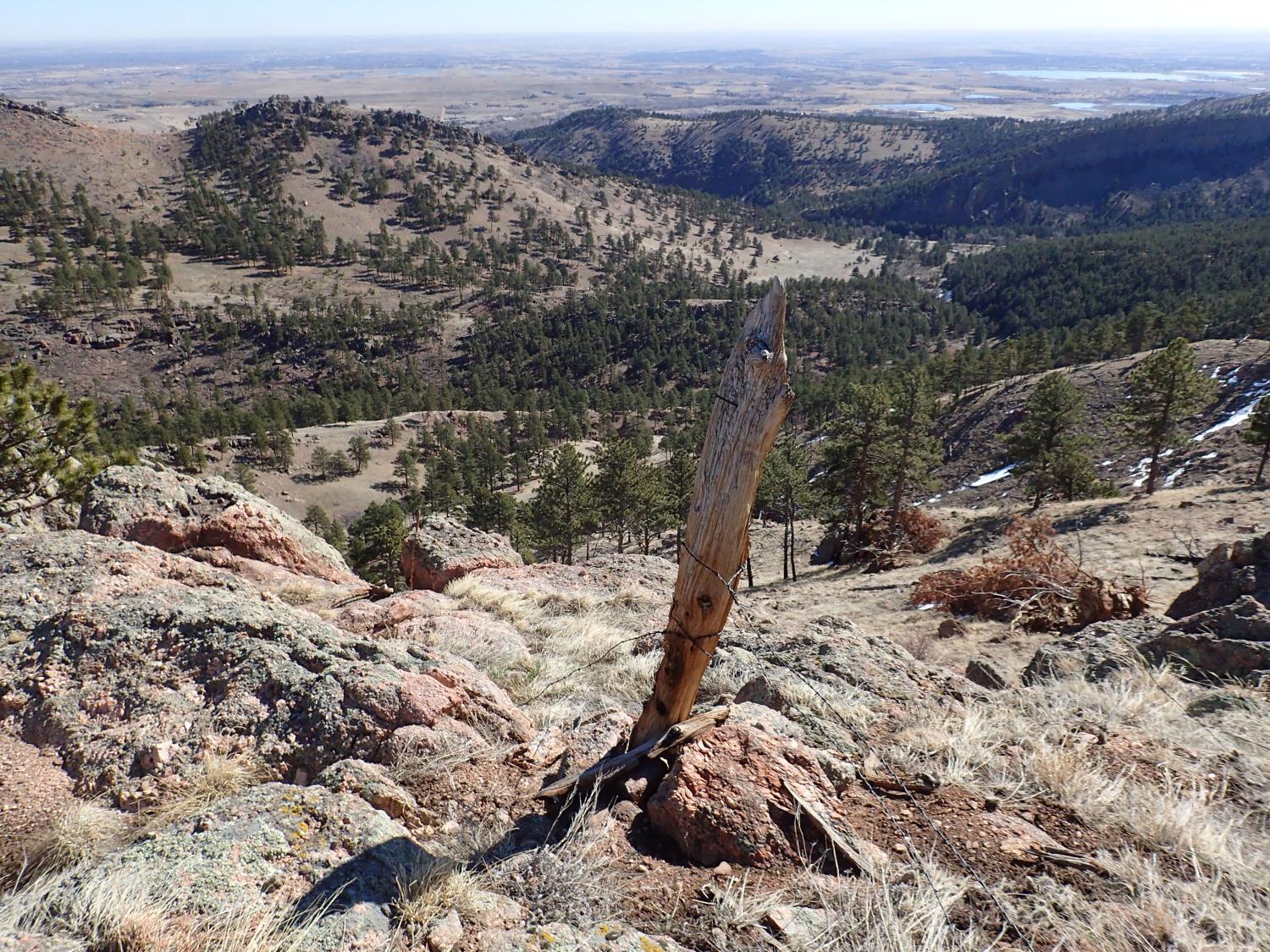
Boulder community impact
Spruce Gulch's impact extends beyond INSTAAR and CU Boulder. We partner with local leaders and organizations to identify and solve environmental sustainability issues that impact local communities.
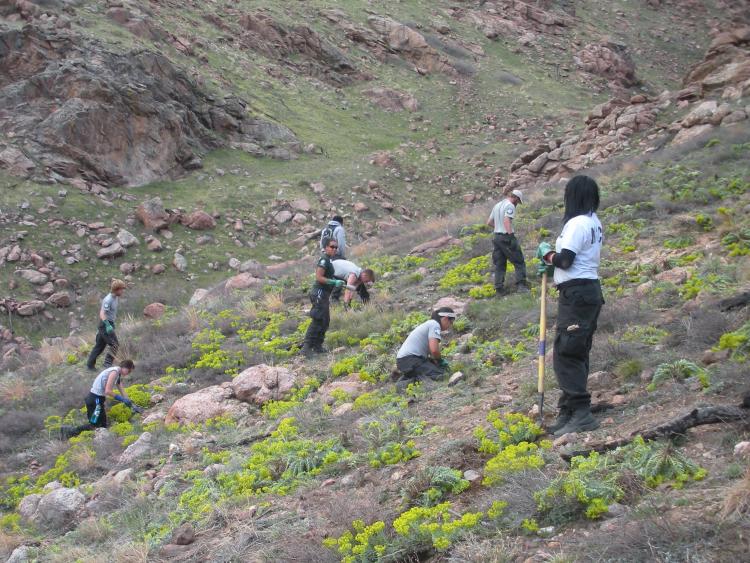
An AmeriCorps team removes myrtle spurge from a hillside that was severely burned in the Overland Fire of 2003.
An upcoming BERC workshop
The research team at Spruce Gulch recently helped form the Boulder Ecosystem Resilience Collaborative (BERC) and is busy planning a kickoff workshop for the group. The meeting will bring together academics, managers, policy makers and stakeholders to identify pressing applied research questions important to the Boulder community. Example actions that can be undertaken at Spruce Gulch include:
- Evaluating biotic responses to climate change and nature-based solutions.
- Improving ecological resilience to extreme events.
- Assessing invasive species and grassland sustainability.
- Empowering land stewards and enhancing cultural values.
Partnering with the city
CU’s acquisition of the Spruce Gulch Wildlife and Research Reserve has enormous potential benefits for our community. As we face the growing impacts of climate change on our local environment, we have an urgent need for places where we can monitor these changes and identify land stewardship strategies that can reduce these impacts. We look forward to working closely with CU and its remarkable faculty and students in using this site to help explore strategies for enhancing our social and environmental resilience to these changes.
Brett Kencairn
Sr Policy Advisor for Climate & Resilience,
City of Boulder
“476 acres of possibility near Boulder for science, sustainability and the arts”
That's the title of an op-ed written by Katie Suding (Spruce Gulch advisory committee member and CU Boulder distinguished professor). Here she explores the future of the Reserve, showing how it strengthens Boulder’s network of conserved lands serving science and the public good.
History & ecology timeline
Today, Spruce Gulch is a mosaic of ponderosa pine savanna, meadow and riparian areas. The site provides excellent habitat for invertebrates, mammals and birds. Overall, Spruce Gulch is home to a large percentage of the plant and animal species found in Boulder County.
Over the years, the landscape, flora and fauna of Spruce Gulch have been shaped, in part, by human impacts and extreme weather. The following timeline documents some of these events. Some dates are estimates based on limited assessment of artifacts found at the Spruce Gulch Wildlife and Research Reserve.
STEP 1
Pre 1850
Archaeological evidence indicates that Indigenous peoples occupied the land at the Spruce Gulch Wildlife and Research Reserve for thousands of years before European settlers arrived in the American West. The Arapaho peoples are likely the last Native American inhabitants of the land. Before the 1850's, native flora and fauna flourish.
STEP 2
1880s
During the late 1800s, a number of prospectors file mining claims on the site. Primitive roads are cut through the rugged hillside, small mines are excavated and loggers clearcut the forest. One prospector establishes a homestead at the confluence of Spruce Gulch and a smaller creek flowing from the north. Roads, mines and logging operations heavily impact plant communities and wildlife, and grazing livestock are introduced.
STEP 3
1910s
By the early 1900s, mining and logging operations give way to small-scale ranching and farming. In the absence of industry, the ecosystem bounces back — wildflowers spring up in the meadows, ponderosa pines grow on the hillsides and riparian vegetation creeps up along the creek. With the plants, comes wildlife habitat. Birds, grazers and predators return to the land, which is now a sanctuary for mountain lions, mule deer and songbirds.
STEP 4
1927
Before CU Boulder acquires the Spruce Gulch Wildlife and Research Reserve in 2025, the site had been owned by the same family for almost a century. In 1927, Irma Freudenberg buys 500 acres of land in Lefthand Canyon. Together with her children, she establishes what the family calls Red Rock Ranch. They keep a small herd of cattle, several horses and chickens on the property. They also grow alfalfa, wheat and apples.
STEP 5
1959
After Irma's death in 1959, her daughter, Alice Holubar, inherits Red Rock Ranch along with 174 acres of land. Then, in 1962, Alice’s husband, LeRoy Holubar, purchases 320 acres that comprise the rest of the Spruce Gulch basin. The house and some acreage of the former Red Rock Ranch still remain in the family today. The rest of Alice and LeRoy’s combined acreage is now the Spruce Gulch Wildlife and Research Reserve.
STEP 6
1980s
Spotted knapweed spreads across Colorado’s front range. The invasive forb arrives at Spruce Gulch after the U.S. Forest Service distributes contaminated grass seed to reestablish vegetation destroyed by a wildfire.
STEP 7
1988
A 1988 wildfire severely impacted the Gulch.
STEP 8
1994
LeRoy Holubar’s daughter, Linda Holubar Sanabria, inherits the Spruce Gulch property after her father’s death. For the next seven years, she works tenaciously to eradicate knapweed from the land.
STEP 9
1998
Lefthand Reservoir Fire (small)
STEP 10
2000
2000 Lefthand Canyon Fire (small)
STEP 11
2001
Linda Holubar Sanabria's mission to fight knapweed encroachment leads her to recruit help from INSTAAR ecologist Timothy Seastedt. Seastedt’s lab releases knapweed-eating weevils at the site as part of a biocontrol experiment. Over the next 24 years, Seastedt brings collaborators and students to the site, which becomes a hub for ecological research and education.
STEP 12
2003
Overland Fire (large)
STEP 13
2006
The end of ranching and grazing on the property.
STEP 14
2008
Volunteers begin removing invasive plant species by hand under the direction of the Seastedt lab.
STEP 15
2011
2011 Lefthand Canyon Fire (small)
STEP 16
2013
An extreme rainfall event over multiple days causes flooding and landslides. Both native and invasive species are reseeded from adjacent land.
STEP 17
2020
Calwood Fire (large)
STEP 18
2025
Linda Holubar Sanabria donates the property to CU, along with an endowment to support ongoing research and education opportunities on the reserve. INSTAAR now leads research efforts at the Spruce Gulch Wildlife and Research Reserve and Seastedt is the reserve director.




